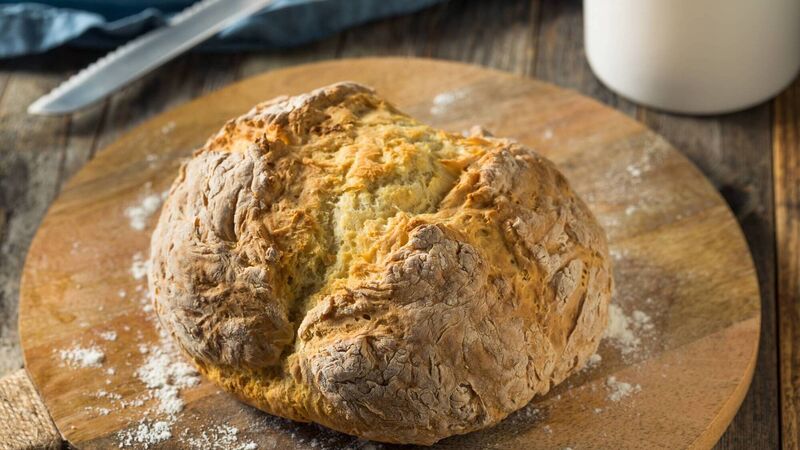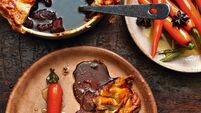How to make the perfect Irish soda bread and the common mistakes to avoid

Homemade simple Irish soda bread is hard to beat.
Every family has their own twist on soda bread, and each one is as delicious as the next. If you were lucky enough to watch someone making soda bread when you were a child, do exactly as they did and you will find yourself on the right path. If you forgot to take notes, channel your memories when following the recipe below.
Soda bread works so well because of science. The buttermilk reacts with the baking soda to create a light fluffy bread where there should be density. If you don't have buttermilk to hand, squeeze half a lemon into your milk and leave it for five minutes before proceeding with the recipe.
A light touch is essential when dealing with soda bread - the less you handle it, the more delicious it will be. Mix the flour and raising agents together with your fingers to aerate it and bring the mixture together with your hand, by shaping it like a claw - this will gather the dough quickly.
An essential component of Irish soda bread is cutting a cross in the top of the dough to let the fairies out. What happens if you don't? We are not sure - we wouldn't dare cross the fairies!
For the last five minutes of cooking, turn your loaf upside down to give it a chance to form an even crust on the bottom.
You will know that your bread is cooked by knocking on the bottom with your fist. If it sounds like a hollow wall, it is done.
Once you've mastered the basic recipe, start to experiment. Brown soda loves seeds, nuts, and finely chopped herbs to the mix. Hard, strong cheeses do really well too, grated into the flour and bread soda, as do a variety of dried fruit, nuts, and even chocolate chunks.
Brown soda bread
This comforting Irish classic is a perfect afternoon treat paired with salted butter and berry jam or enjoyed with a bowl of piping hot soup

Servings
10Preparation Time
15 minsCooking Time
30 minsTotal Time
45 minsCourse
BakingIngredients
340g wholemeal flour
110g plain white flour
15g butter
A barely rounded teaspoon of bread soda
1 tsp salt
1 egg
415ml (470ml, minus the egg) buttermilk
Method
Preheat the oven to 230ºC.
Mix the flours in a large bowl and rub in the butter. Add the salt and sieved bread soda. Lift the flour up with your fingers to distribute the salt and bread soda.
Add the beaten egg (if using) to the buttermilk. Make a well in the centre and pour in all the liquid. With your fingers stiff and outstretched, stir in a circular movement from the centre to the outside of the bowl in ever-increasing concentric circles. When you reach the outside of the bowl seconds later the dough should be made.
Sprinkle a little wholemeal flour on to the worktop. Turn the dough out onto the flour. Sprinkle a little flour on your hands. Gently tidy the dough around the edges and flip onto the flour. Tuck the edges underneath with the inner edge of your hands, gently pat the dough with your fingers into a loaf about 4cm thick.
Cut a deep cross into the bread (this is called ‘Blessing the bread’ and then prick it in the centre of the four sections to 'let the fairies out of the bread').
Transfer to a floured baking tray.
Bake in the preheated oven for 5 minutes and then reduce the temperature to 200ºC for the remaining 25-30 minutes. Turn the bread upside down after approximately 30 minutes. Cool on a wire rack.







